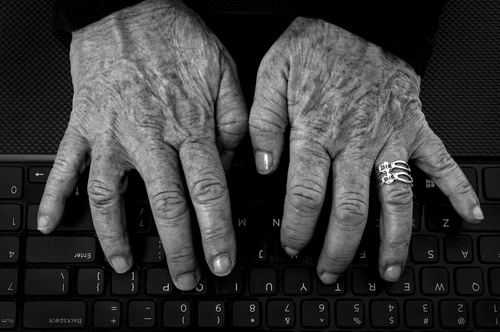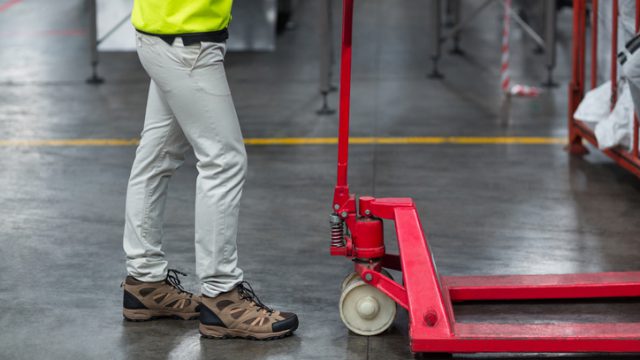Age Discrimination is a Serious Problem in the Workplace

Caroline, a 52-year-old single mother living in the Midlands, was furloughed from her job in the hospitality sector shortly after the pandemic began in March 2020. She quickly started to look for another job, but she found the experience profoundly demoralising—which she directly linked to age discrimination in the job market. “I’ve given up,” she said. “There are a lot of people doing the same job, and who are a lot younger.” Caroline considered pursuing jobs with lower salaries but this created a new set of anxieties about how to make ends meet, leaving her stuck on furlough.
According to a joint report from the National Institute of Economic and Social Research (NIESR) and Demos, fears about age-bias are widespread among older jobseekers like Caroline, with over a third of workers over 50 years old believing that they are at a disadvantage due to their age. The research suggests that many of these workers are choosing to stay in their existing jobs due to this perceived disadvantage, thus opting out of potential career or wage progression. Alternatively, many accept jobs with lower salaries or they retire early, while others amend their CVs to conceal their age by, for example, shortening their employment histories and experiences. As the report notes, these fears are not unfounded: experimental studies from Europe and the UK show that older applicants are routinely rejected at the pre-interview stage in favour of identically qualified candidates of younger ages.
There is a real and urgent need for both the government and employers to address age discrimination in the recruitment process, especially given the end of the coronavirus job retention scheme (CJRS) last month. While the full impact of this remains to be seen, recent research from the Resolution Foundation suggests that older workers are significantly more likely to have remained on furlough than younger workers, placing them at greater risk of redundancy now. This is particularly troublesome given older workers who temporarily leave the labour market are more likely to become long-term unemployed than their younger counterparts. Those who do return to work often do so at lower salary grades. Older workers who are women, from ethnic minority backgrounds, or have lower levels of education are at particular risk of prolonged unemployment and lower wages.
These trends threaten to reverse many of the significant gains made prior to the pandemic. Before Covid-19 struck, the number of people over 50 years old in paid work was at a record high, with older workers comprising a third of the total workforce. Both the extension of the pension age to 66 and the inclusion of age as a protected class in the 2010 Equality Act were signs of progress. But recent data from the Office for National Statistics (ONS) shows that the employment rate gap between middle-aged workers and older workers is now widening again for the first time since the mid-1990s. This is occurring despite widespread staff shortages across the country and the highest number of job vacancies since records began. In addition, ONS data this month suggests that around two-thirds of these vacancies are due to increased rates of economic inactivity, driven particularly by fewer older people either in or looking for work, and by more younger people in education.
The Centre for Ageing Better has produced a guide for employers on how to tackle age-related barriers in the recruitment process, in collaboration with the CIPD and REC—two leading bodies in the HR and recruitment industry. Among other things, they recommend that employers scrutinise their job adverts, avoiding the use of age-stereotypical words and phrases. Drawing on research from the Behavioural Insights Team (BIT), the guide notes that words such as “innovative” or “technologically-savvy” have a negative effect on how older applicants view their chances of success in a job application. At the same time, the inclusion of diversity statements, flexible working options and generous pension contributions make candidates more likely to apply for jobs, and to believe in their possible success. Other recommended interventions include streamlining interview processes and collecting more data on the age profile of job applicants and workers. The government must also make employment support programmes—which have been shown in the past to be relatively unhelpful for the older unemployed—more effective for this age group.
The need to improve the employment possibilities for older people is not just a question of welfare, nor the changing demographics of UK society. It will also help the economy, struggling to adjust after both the pandemic and Brexit. Analyses from HM Treasury in 2018, for example, estimated that a mere 1 per cent increase in the number of workers aged 50-64 could increase GDP by approximately £5.7bn per year, and generate around £800m a year in income tax and National Insurance Contributions. Workplaces also stand to benefit directly from the inclusion of older workers: the Centre for Ageing Better notes, for example, a recent YouGov poll showing that 79 per cent of employers see older workers as an important source of skills and knowledge-sharing. This resonates with recent data from the OECD which shows that age diversity can increase productivity in firms. There is really very little to be lost, and much to be gained.










